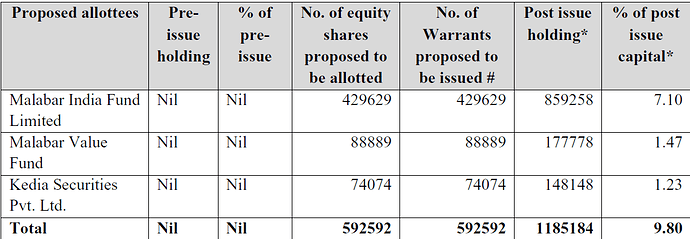Hi everyone,
Thanks for the questions. Valuations are clearly stretched and that is correct. Let me answer some of the issues that have been raised:
-
Rapples: Samer Shah is correct that last year company was pushing Rapples a lot in their communication. To give a context here, it was a logical thing for them to do. They are in printing business. They have major connection with publishers. They wanted to leverage that presence in e-books(risk to printing) and they went for the academic markets with Rapples. They have been honest this year that they were ahead of the market and they have acknowledged that they are finding it difficult to grow. They completely did not stop this because of the capex they made in Rapples. They have now crossed break even and making profits here. But they do not intend to put in additional capital to expand because of the opportunities in BOD.
-
Exports: Company would like to export to Africa. But here the company said they were exporting to have met with currency risks. Countries do not have currency and there is a foreign exchange problem. The clients however are ready to pay. And they are paying too which can be seen by the falling accounts receivables figure. As a precaution, they are now doing all business through letter of credit. So they have not stopped it completely but are reacting to changes in the environment.
-
BOD: Coming to the elephant in the room, BOD. When people here are saying that it is hard to see why people will pay higher for printing, they have offset printing in mind. For publisher, BOD is the biggest advance in their business model.
80% of all books published by publisher gives they 20% of revenue
This is a massive tail that is up for grabs in the organised book market. Basically, publishers have a huge issue for this 80% as they dont want to stock it and it is a huge Working Capital issue for them. Publishers will have no option but to approach Repro for this 80% of their portfolio. But valuewise, Repro will only make 20% of total market. So say for example, by 2020, book market would be Rs. 70000 cr. Out of this, say e-commerce market would be 20%.
This gives us a book market for Rs. 14,000. Out of this, BOD would be Rs. 2800 cr. Now, there is no player in BOD apart from Repro. In this small Rs. 2800 cr market, Repro will have to pay publisher and e-commerce player. In AGM, they clarified that their cut is around 15%-30%. Imagine 20% is something they get which will give them Rs. 560 cr.
4 Offset: What I want to stress is that please look at company from a complete printing solutions point of view. Now, as I have said above, 80-20 rule, says that 20% of titles(Repro calls them FrontEnd title), will give them 80% of revenue. These titles are very low margin for Repro but high volume. This AGM, CEO said that the offset capacity which was underutilised due to exports, is going to be used to capture marketshare of frontend titles. This strategy will show results in next two-three quarters.
5 Supply issues: The other challenge to 2020 plan is the capacity constraint in BOD. 1 lakh books are sold daily on e-commerce site. Repro is selling 3000-4000 books a day. Their capacity is 6000 currently. This capacity utilization has gone up by nearly three times in the last two quarters. And by the next two quarters they should be hitting 6000 a day. They will add in more 6000 capacity by the end of this year. So for next year they should be doing 12k books a day. This will give them nearly 7-8 percent book marketshare in eCommerce. This marketshare is for the mid end and the backend titles(80% of the tail). And the frontend marketshare can be captures through offset printing.
6 Low RPT: Currently, they seem to be getting Rs. 350 per book through BOD. This also has the potential to go up as low tail books are high margin.
7 Valuation: Clearly overvalued. But is their potential to grow? If management can implement on the following parameters
a. Ingram: They have not uploaded 70-80% of the titles given by Ingram. They should do this quickly and convince publishers about the growth in India market
b. Offset-BOD Synergy: They should or must find a way to take leadership for frontend titles. This will give them credibility in the market place and only then will become a “proxy on Indian printing market”
c. Ethics: I have not made up mind if the promoters are ethical or not because of the issues of RPT.
d. Academic Market: We should remember that most of the publishing market is academic. E-commerce has not yet penetrated in this market. Company will have to come up with a strategy for this crucial piece of the puzzle.
Investment Philosophy: As India grows, the share of organised markets will increase. Be it banks, sanitoryware, plywood, etc. In the printing business, Repro is the closest proxy one can think of in the next 7-10 years. Now, I am not saying that investors need to have such long horizon. Advances in 3d Printing are the biggest risks to BOD which are not discussed by anyone. But again, who owns the content? So one can look at Repro as a printing business. In that case your valuation might be different. You can look at it as a book distributor, and your valuation might be different. Or a content aggregator, and your valuation will be different. It is a tough call.
Disclosure: Invested.


